Gira tu dispositivo para una experiencia óptima
Gira tu dispositivo para una experiencia óptima

4 días

Cultura

Playa

Cádiz relax
Enter your email address and in a few seconds you will have the experience on your mobile so you can see it whenever you want.
We have emailed you the experience; enjoy Cadiz like never before.
Don't you get your experience?
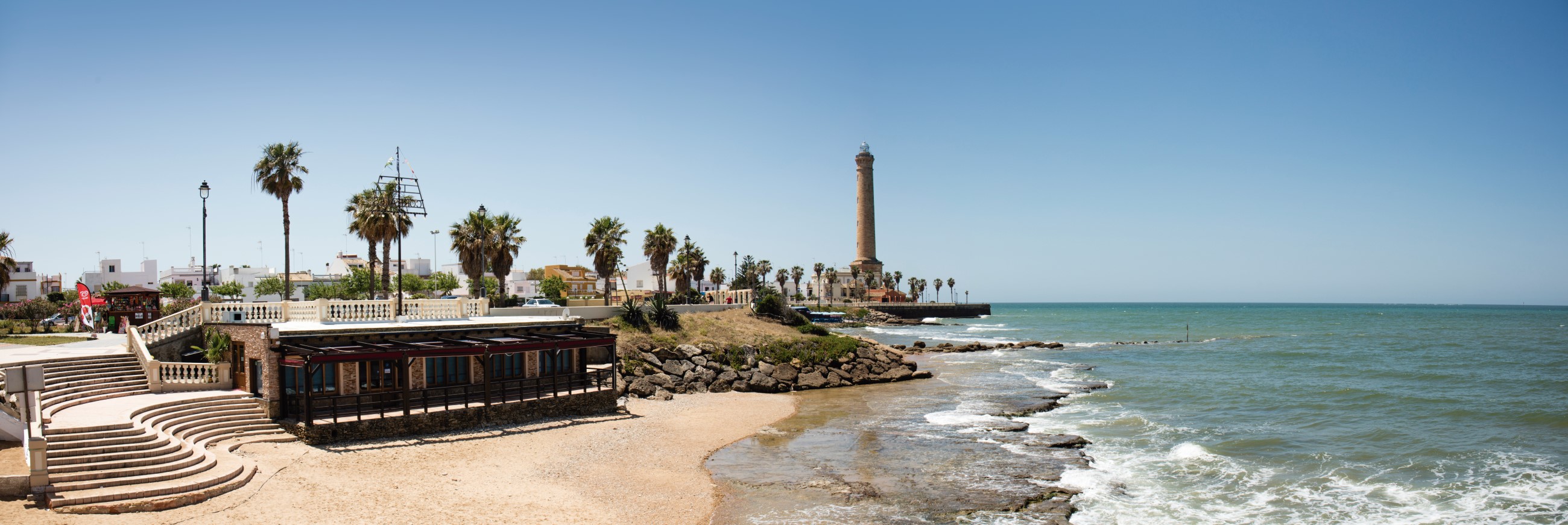
We were looking forward to seeing you round here again! This time we we're going to propose a trip along the coast of Cadiz, following a route with lighthouses that we can admire and even visit. Some of them are newly built, other are reconstructions of old watchtowers and defensive systems. Some perch at the very top of sheer cliffs and others stand by riverbanks. If they could the stories of their lives, they'd regale us with tales about battles, attacks by pirates, shipwrecks and rescues. But perhaps they don't even have to speak, if we know how to read their marks and wrinkles... Come on, pack that suitcase! Stuff in what you need for a four-day trip, and don't forget your swimwear. We're off to Cadiz to discover the other Costa de la Luz.
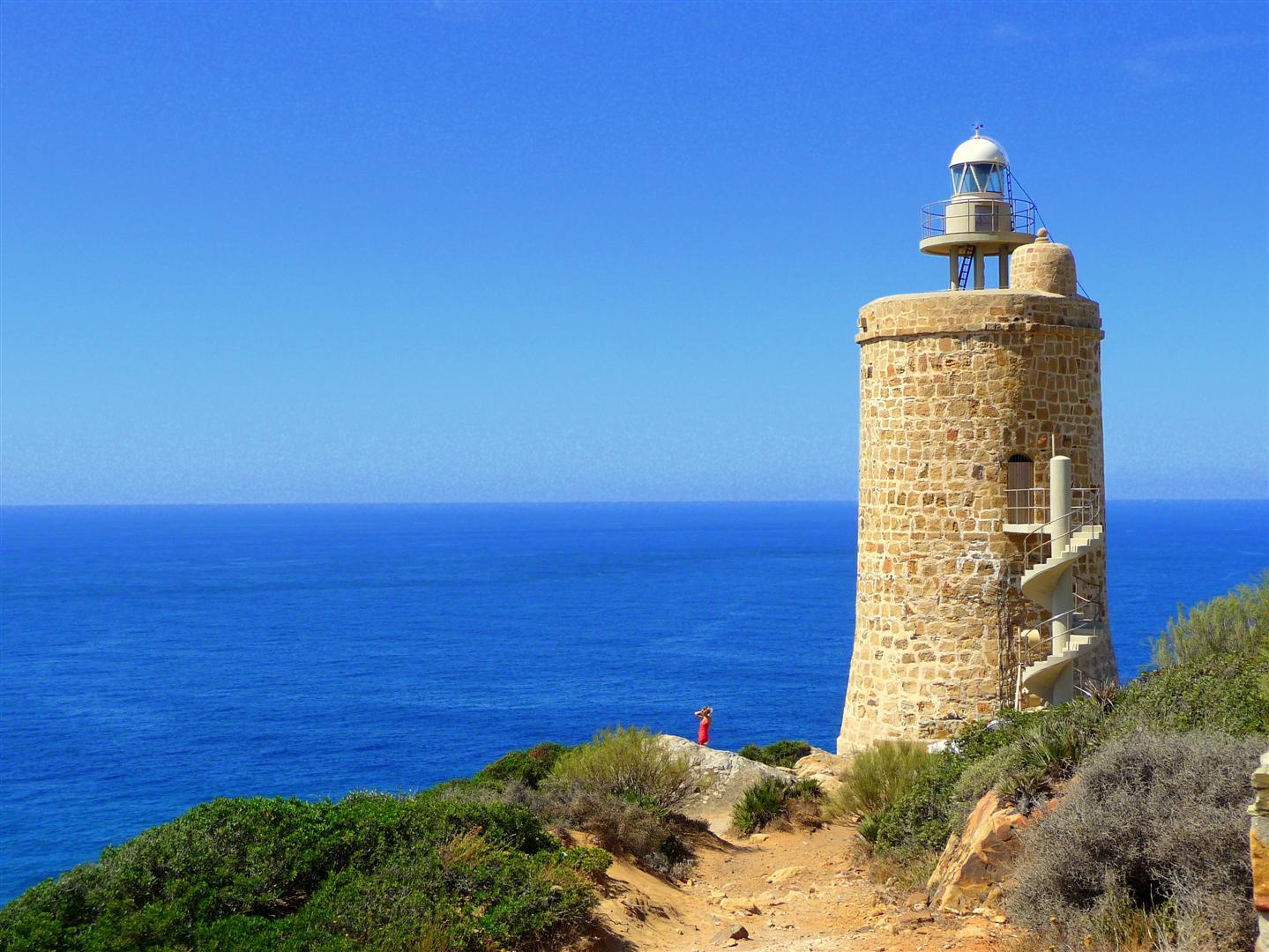
Inserta aquí una nueva sección
Our expedition commences in Sanlúcar de Barrameda. This beautiful town on the banks of the mouth of the river Guadalquivir has two examples of lighthouses associated with a river. The first, the Bonaza lighthouse (1870), is close to the port of Sanlúcar. It was built to ease the way for ships sailing up to the port of Seville. This needle of light was assisted by another: the lighthouse of San Jerónimo, located further upriver and later transferred to the pine forest at La Algaida.
Neither of them are working now. River lighthouses are rarely seen, perhaps because navigable rivers are not common either. That's why we thought any journey to discover lighthouses just had to include these two. What's more, they're the work of a famous lighthouse engineer, Jaime Font, who left his mark in several parts of the province.
Another essential thing to do here is remember the importance of Sanlúcar in the voyage to the New World and other major events of the period, with the port and beaches of Sanlúcar as their backdrop. This is the case of the first circumnavigation of the world, which took the voyagers three years to complete (1519-1522). In the Paseo de Bajo Guía, a commemorative monument marks the starting point of the expedition. It is called the Legua Cero. Further on, the promenade has a two-sided ceramic mural that commemorates the voyage. If you like replicas, you'll love the one at the Fábrica de Hielo. It's a replica of the Nao Victoria, the only ship that managed to get back home. There are other points of interest in the town related to the commemoration of the first circumnavigation. Two routes from the tourist office can be found here: http://www.sanlucarturismo.com/que-hacer-en-sanlucar/rutas-recomendadas/rutaprimeravueltaalmundo/
For lunch, one option is to go to the restaurants in the Bajo Guía or, if it's summer, go to one of the beach bars and restaurants.

We'll spend the afternoon and evening in Chipiona and go for a walk along the beach of Cruz del Mar, dominated by a large fishing weir that is uncovered at low tide. The waters of Chipiona are rich in iodine and are highly recommended for your health. In the past, the area where we are now was the port where trading vessels entered and left the city. The area was called La Puerta del Mar. At this point, a wooden cross was erected to indicated the entrance to the town, which was a custom at the time. Now it is a symbol for the locals. On 1 November 1755 a tsunami struck the coast of Cadiz (caused by the Lisbon earthquake) and the people of Chipiona carried the statue of Cristo de la Misericordia to the cross at the sea to intercede for them. Since then the statue of Christ is carried along the same route on every first of November.
Walking along the Paseo de la Cruz del Mar, you come to the plaza and the castle of Chipiona (18th century). Today it is home to the Cadiz and New World tourist interpretation centre, which is full of information about the relationship between the province of Cadiz and the discovery of America. For more details and opening hours, call +34 956 92 90 65. (Closed due to COVID-19 pandemia)
Keep on walking till you come the lighthouse of Chipiona (1867), the highest in Spain and one of the highest in the world, according to the locals. A 69-metre-high tower and 322 steps that can be taken nice and slow right up to the top. Scared? Me? Entrance is 5 euros. You have to reserve beforehand (tel. +34 956 929 065) http://www.turismodechipiona.com/destinations/faro
Now it's time for dinner, so make use of the opportunity to try the local gastronomy: fish, shellfish, tomatoes and produce from local market gardens are common ingredients in their dishes. Don't forget to ask for muscatel. The muscatels of Chipiona are amongst the best in the world.
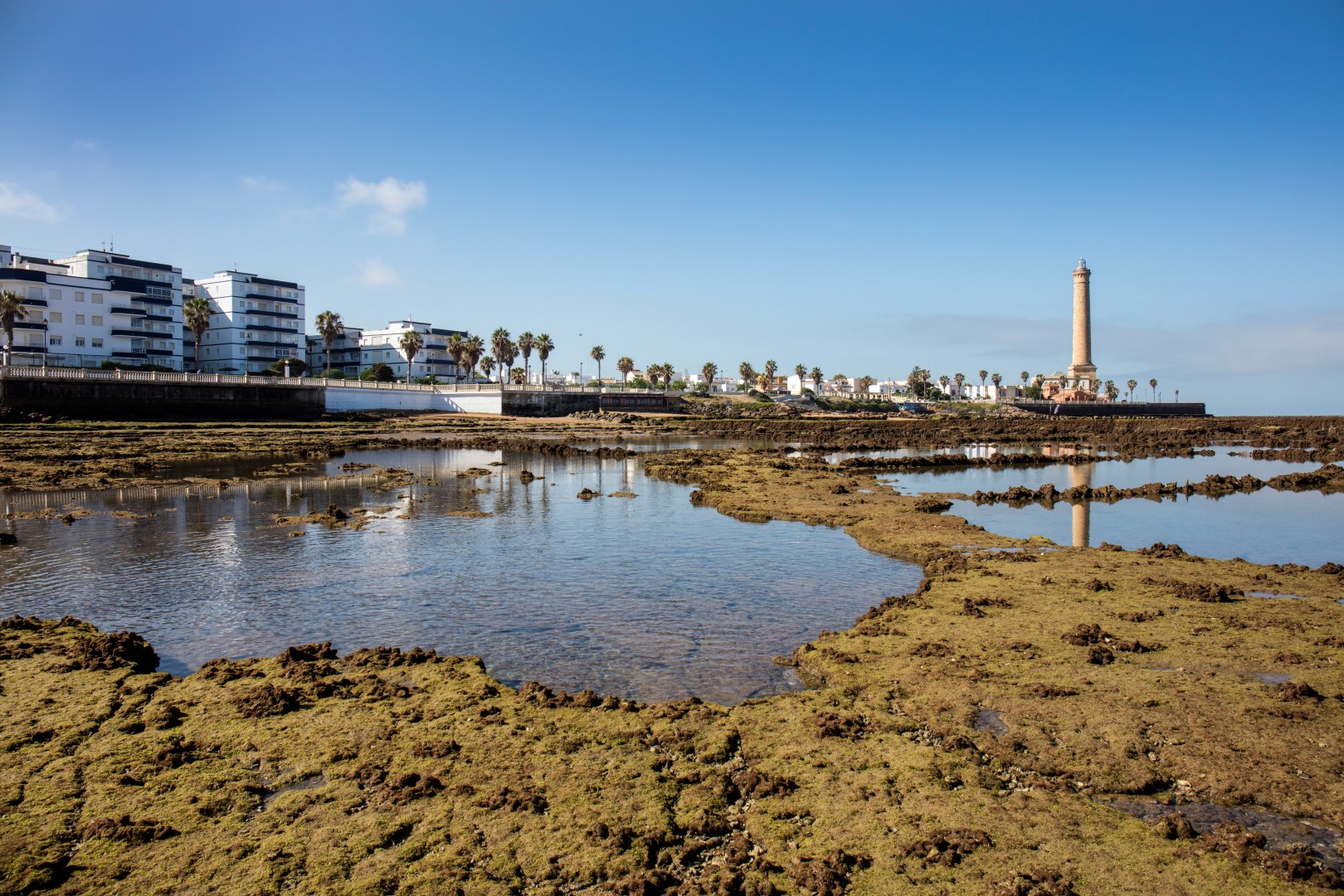
Today we're off to Rota. There, between the beaches of La Costilla and El Rompidillo, opposite the port, a white lighthouse proudly reaches to the sky. It can be seen from up to twelve nautical miles away. It was built at the end of the 20th century. Behind you there are the remains of the ancient town walls and another 19th century lighthouse just above them. You're in a very interesting area for monuments. Nearby are the Castillo de Luna (18th century), built on top of an old Moslem fortification, or ribat, and the parish church of Nuestra Señora de la O (16th c.). The tourist office has organised a route called 'Discover Rota' that you're sure to like (for more information, call +34 956 84 63 45 / 956 84 13 52 or go to [email protected]).
Since we're here, we can take a catamaran to Cádiz, the public marine transport that links the municipalities of the Bahía de Cádiz (times: https://cmtbc.es/catamaran.php). While we wait for our ship, we've got some time to go to the covered market and buy a snack or a souvenir like a bottle of tintilla, a sweet wine typical of Rota that you can buy at Bodegas El Gato https://bodegaselgato.es/enoturismo

From the sea: lighthouse of Puerto Sherry
On the catamaran trip you'll be able to see the lighthouse of the Puerto Sherry Marina, in El Puerto de Santa María. It was recently built, but you have to admit it does look charming, as does the rest of the village (if you want to visit it, but without missing the catamaran trip, then we propose plan B: come from El Puerto in your car and take the catamaran to Cadiz from the port of El Puerto. The trip is shorter but just as beautiful).
We're sure you loved the trip by boat to Cadiz. It's a delight for all the senses to see the silhouettes of the town and villages of the Bahía and disembark in the maritime heart of the region.
Now we're off the beach of La Caleta. You can walk there, taking a short cut through the streets in the centre; or follow the profile marked by the sea along the Alameda. The city bus stops are also nearby (take the number 2), as are the taxi ranks. You've even got a stop for tourist buses that take you on a panoramic tour (https://city-sightseeing.com/es/19/cadiz)The ticket is valid for 24 hours and includes suggestions for routes on foot. You can get on and off the bus as often as you want.
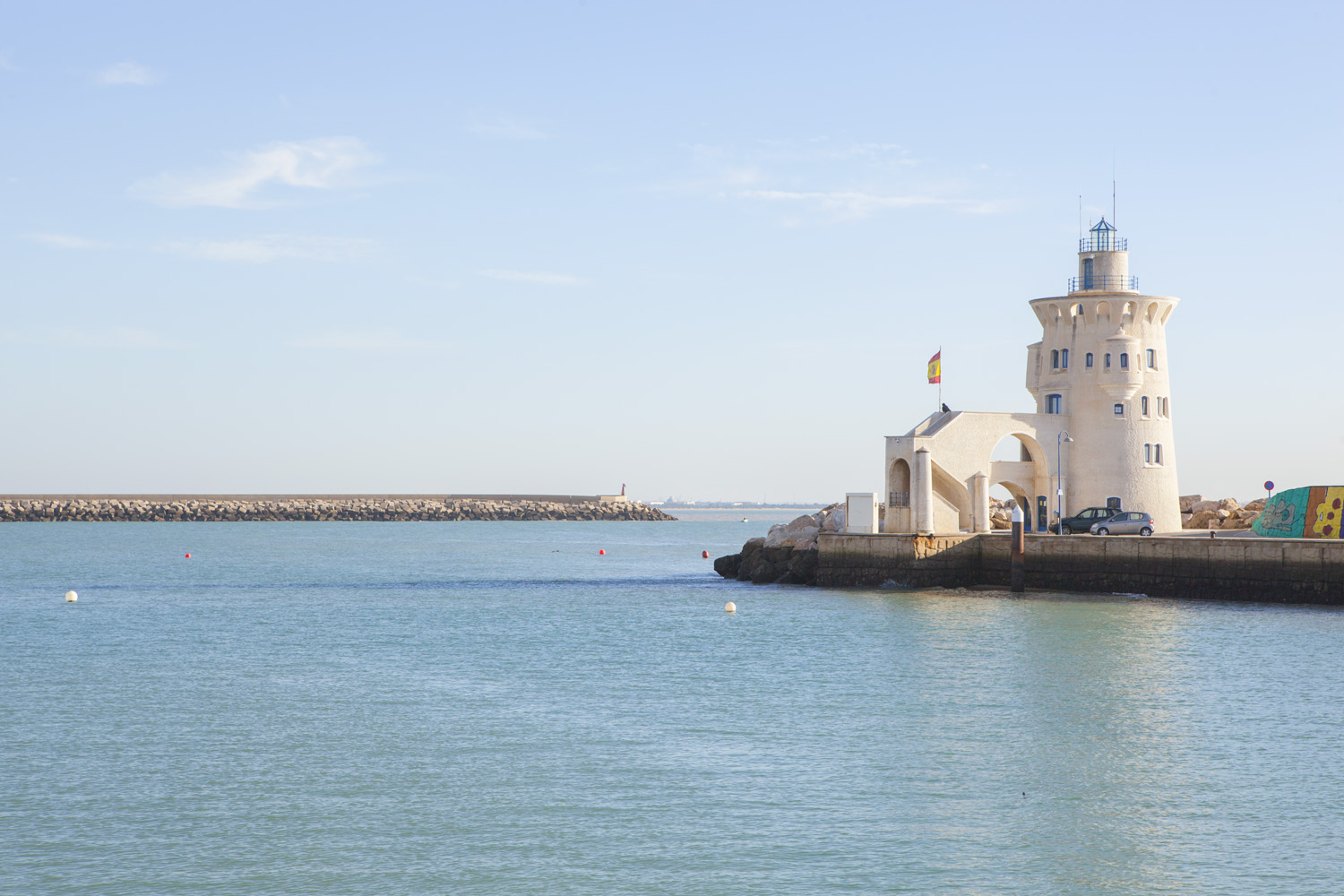
La Caleta and the lighthouse: San Sebastián
The beach of La Caleta is very snug, as you'll see. It's the beach that local gaditanos who live in the city centre have always used, along with those seeking refuge from the Levant winds when it stops them from enjoying the other beaches in the area. On each flank, one castle: San Sebastián and Santa Catalina. In the centre an old, snow-white spa. And the sea itself, small boats rocking in the waves. It's all very poetic. If the Muses lived somewhere in particular, it would be in La Caleta.
We've come here to enjoy the views and see the lighthouse of San Sebastián. It's inside a castle (18the century), which is located on a small island where the classical temple of Chronos was said to be situated. An artificial walkway (promenade) over the rocks connects the isle to the rest of the city. The lighthouse that's there now dates back to the early 20th century. It's known that centuries before there were at least two, accompanied by a watchtower. Entering the castle is prohibited. But we can walk along the promenade and enjoy the views. They say that the sunsets from here or from La Caleta beach are the best in the world. Shall we go and see?
Now the options available to you are return in catamaran to Rota and pick up the car, or spend the night in Cadiz and go back to Rota the next day. We took the second option. A trip on the trail of the lighthouses of the coast of Cadiz would not be complete without a dinner at El Faro de Cádiz (reservations: +34 956 211 068) or a bar or restaurant in the district of La Viña.
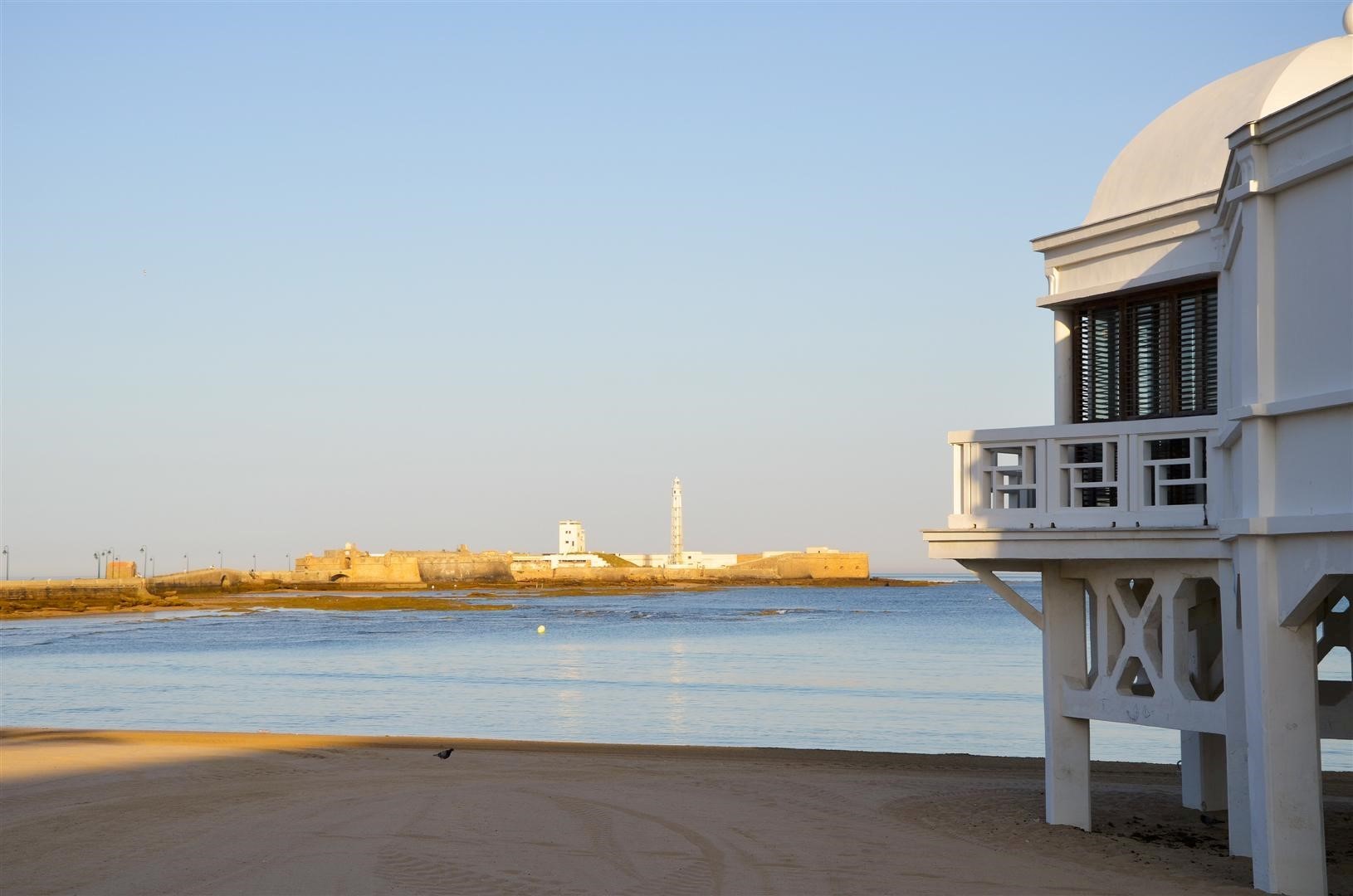
In a world of myth and legend: Lighthouse of Sancti Petri
Third day. The first thing to do is return to Rota to get the car. From there we're going to Chiclana, to a legendary place on the coast of Cadiz: the island of Sancti Petri, which is part of San Fernando. There's a lighthouse that we can only see if we go into the sea. Some people go by canoe. We don't have enough experience, so we'll go by ship and leave the kayak for the waters in the natural park of the Bahía de Cádiz.
The island of Sancti Petri is actually the remains of a much larger island. The Phoenicians called it Kotinusa. There was a temple at each end: one for the worship of Chronos (on the isle of San Sebastián, the one we saw yesterday in Cadiz) and another for Melqart (in Sancti Petri). The island was a very important one for the Phoenicians and Romans. It is mentioned in texts by classical historians. Archaeological studies confirm its importance, with the finds dug up in the area (these can be seen in the provincial museum and the municipal museums of Chiclana and San Fernando). The Arabs were also well aware of its strategic importance. What we're visiting today is the reconstruction of a defensive bulwark built in the 16th century, of which only the tower remains. And on top of that you can see the lighthouse. It's a good excuse this time round to come to Sancti Petri. To check the opening times for the castle and the guided visits on offer, call +34 667 502 369.
On the way back, you can take a walk around the old village of Sancti Petri, have lunch at one of the restaurants there, or perhaps you fancy going to the beach of La Barrosa to get some sun and have lunch at one of the beachside bars and restaurants on the beach or the promenade.
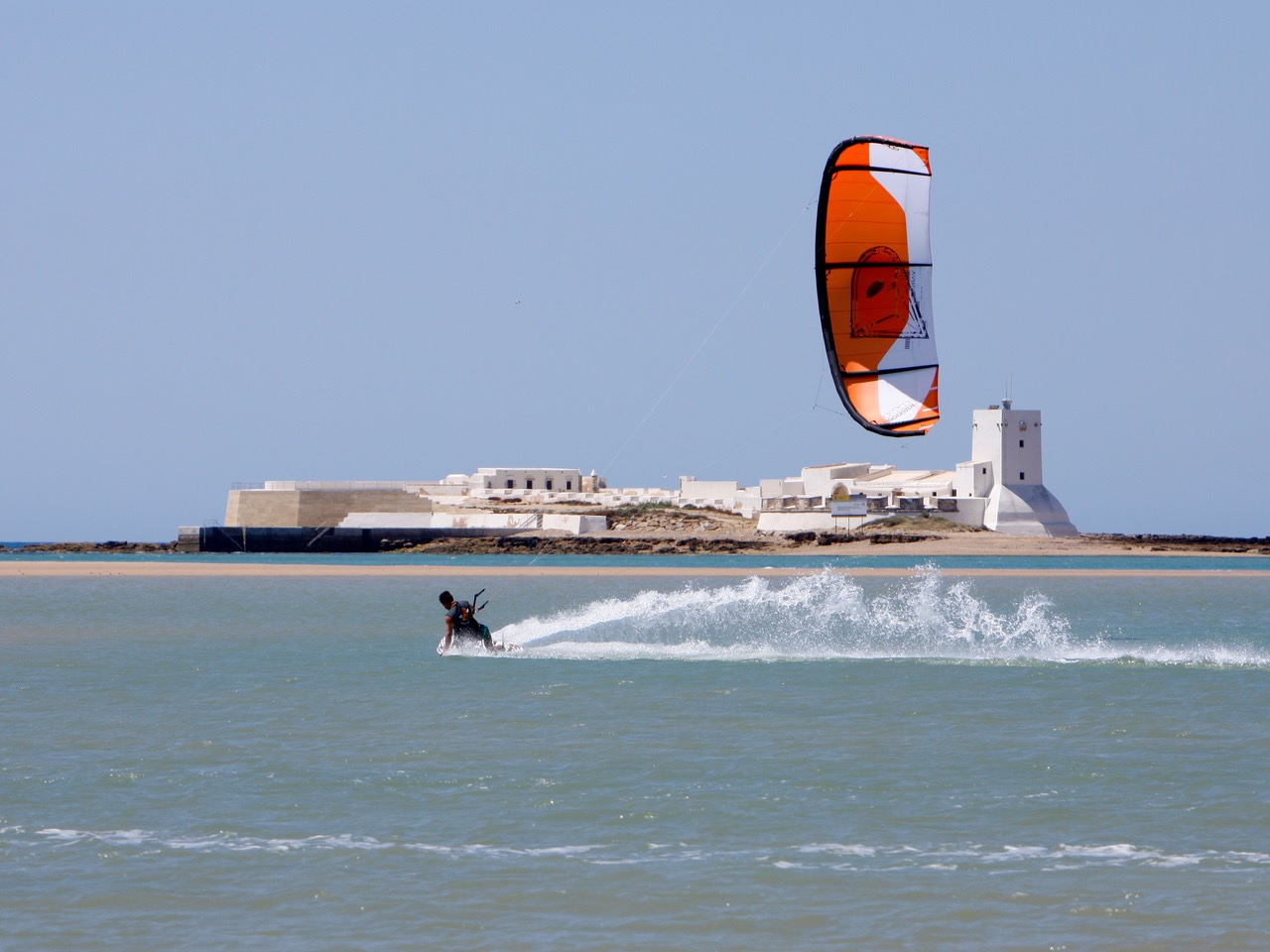
On the cliff tops: Lighthouse of Roche
Now we're off to the lighthouse at Roche, in Conil de la Frontera. Two lovely ways to get there are by bike or on foot, along the Calas de Roche trail, having a swim or two as you go (https://www.cadizturismo.com/es/rutas/senderos-calas-de-conil
We've decided to get there by car, on the CA 4042 that leaves us right at the door. The lighthouse is located on a cliff, in an old watchtower that formed part of the defensive line of the coast. It dates back to the 16th century, although it lost a lot of its original structure when it was converted into a lighthouse.
The views from the lookout point are incredible. If you look to the left from where you are now, you'll see our next destination, the lighthouse of Trafalgar.
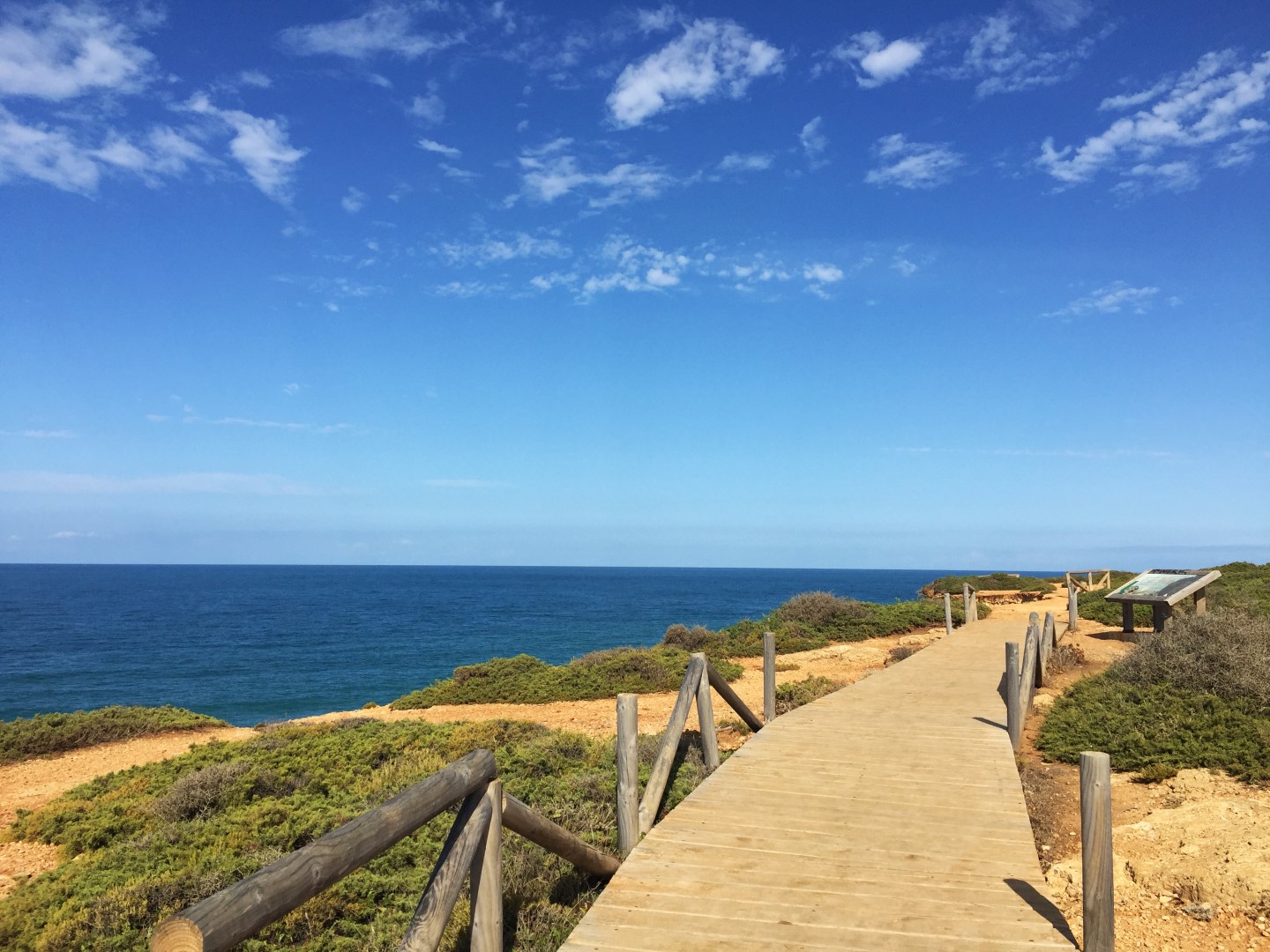
A mystical place: Lighthouse of Trafalgar
A beautiful way to reach the lighthouse of Trafalgar (19th century) is from the beach of Los Caños de Meca (Barbate). If you walk along the shore, you can right up to the foot of the lighthouse, situated on a mound of sand. The building is located in the natural park of La Breña and the Wetlands of Barbate. Archaeological excavations near the lighthouse have uncovered the remains of an ancient temple dedicated to the goddess Juno and a fish salting factory, which is a testimony to the historical relationship between this area and the fishing industry.
Next to the lighthouse you'll find the remains of a watchtower built in the 9th century. Trafalgar is also famous for being the backdrop to a naval battle (1805) that put an end to Spanish naval hegemony and caused the deaths of 5,000 people.
We strongly recommend waiting to see the sunset from here. It's a unique experience, almost mystical. Then we'll head off for dinner nearby.
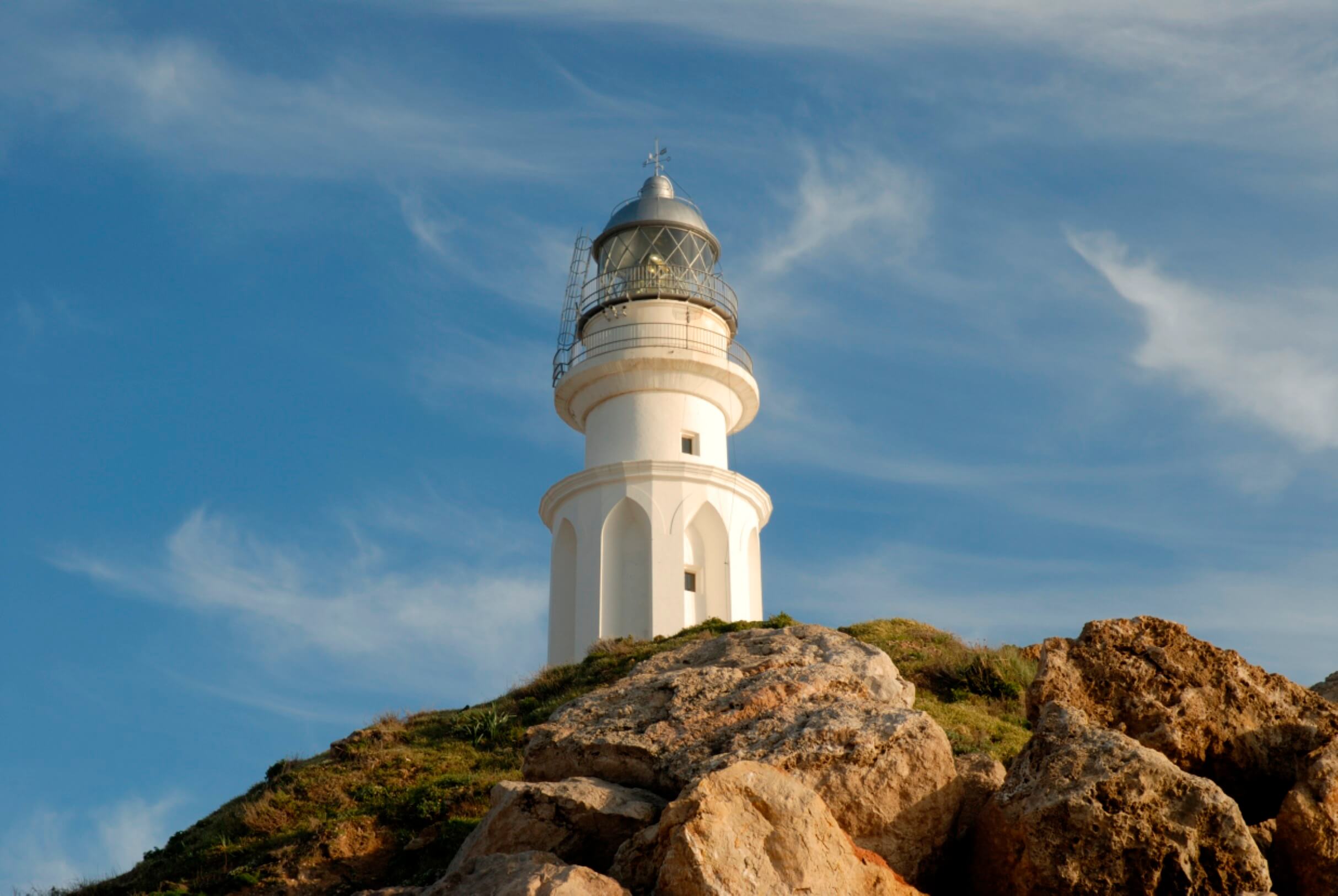
Isla de Las Palomas: Lighthouse of Tarifa
We'll spend the last day of our journey in the Campo de Gibraltar. A crossing point between two seas, a frontier between continents, with two natural parks (El Estrecho and Los Alcornocales) and a colony in its territory have all left a deep mark on the character and landscape of the area.
First, we're off to the island of Las Palomas, in Tarifa. This is the southernmost point of the European continent. The headland that gives access to this rocky spur marks the limit between the Atlantic and the Mediterranean. The visit is well worth it, if only to see a watchtower of the 16th century that is now a lighthouse, a walled complex (19th c.), barracks and a Phoenician necropolis, and especially because it still belongs to the armed forces and access there is highly restricted. Visits have to be arranged at least 72 hours in advance. Check the times and reservations at the information point of the Natural Park of the Estrecho +34 671 492 755.
And now that we've seen the island of Las Palomas on the surface, shall we go underwater and see the treasures of the deeps? We'd recommend contacting one of the scuba diving companies and asking them what services they offer, so they can show you the best places, depending on your level of experience and fitness. http://www.turismocampodegibraltar.com/tarifa/que-hacer/Buceo-en-Tarifa-Isla-de-las-Palomas/
Then you can have a sunbathe at the Chica beach: https://www.cadizturismo.com/es/playas/playa-chica
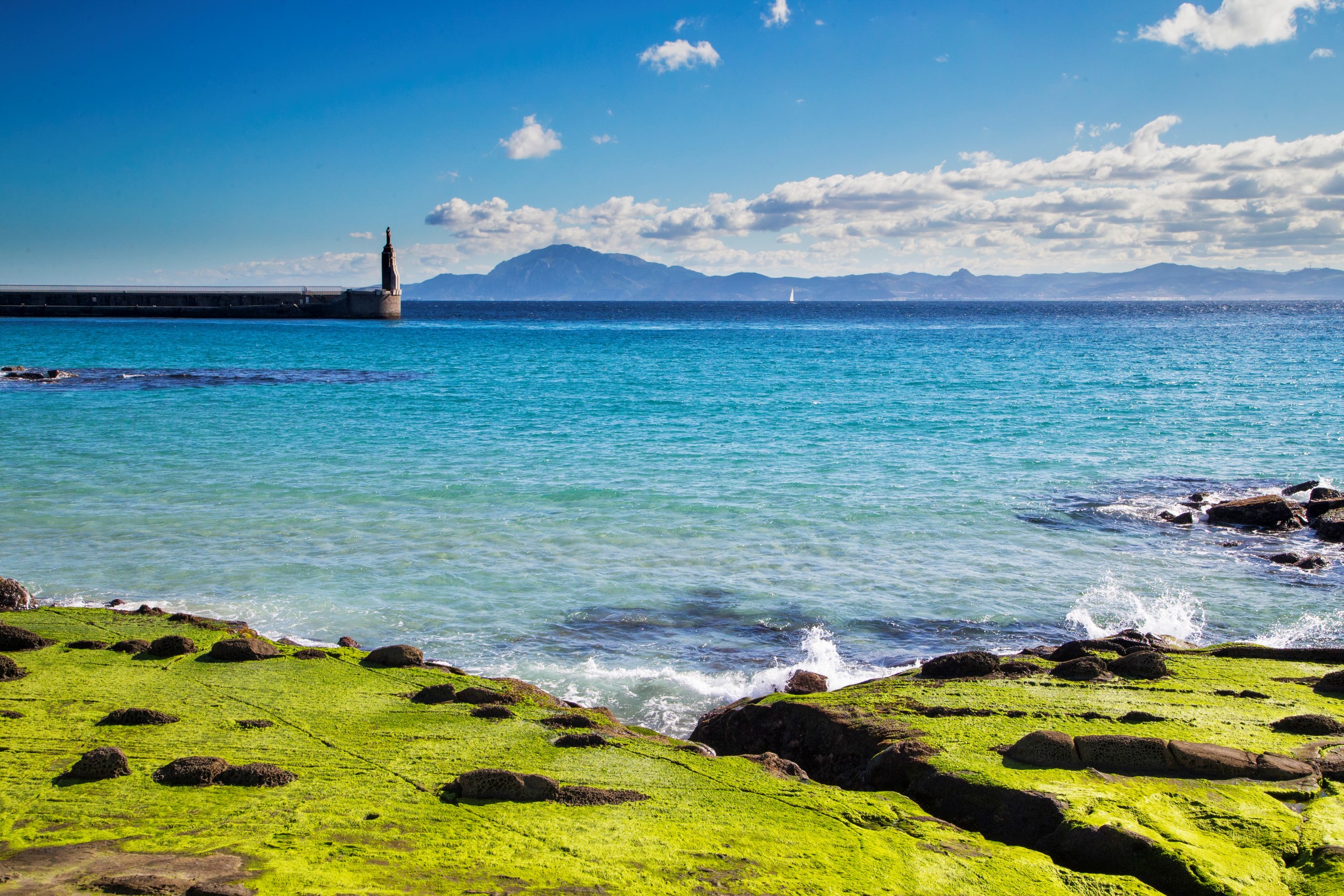
Algeciras: lighthouse of Punta Carnero and Isla Verde
After lunch and time permitting, we'd like to do the trail of Colada de la Costa https://www.dipucadiz.es/desarrollo_sostenible/senderos/Colada-de-la-Costa/ But, as we don't have much time left, we'll save that experience for another time and set off for Algeciras.
The lighthouse of Punta Carnero is on a cape with the same name. It was inaugurated in 1874, and was designed by the same engineer who built the lighthouses of Chipiona, Bonanza and San Jerónimo, so you'll some similarities between them. If you take a look around, you'll see the flysch formations of Algeciras https://www.cadizturismo.com/es/rutas/los-flysch-del-estrecho. These are the result of millions of years of geological activity and give the local coastline one of the most beautiful landscapes in the region.
There's another lighthouse in Algeciras, in Isla Verde. Another project by, yes, you guessed it, Jaime Font. Fortifications were built on Isla Verde in the 18th century. The whole structure is conserved within the port of Bahía de Algeciras. The lighthouse is no longer operational.
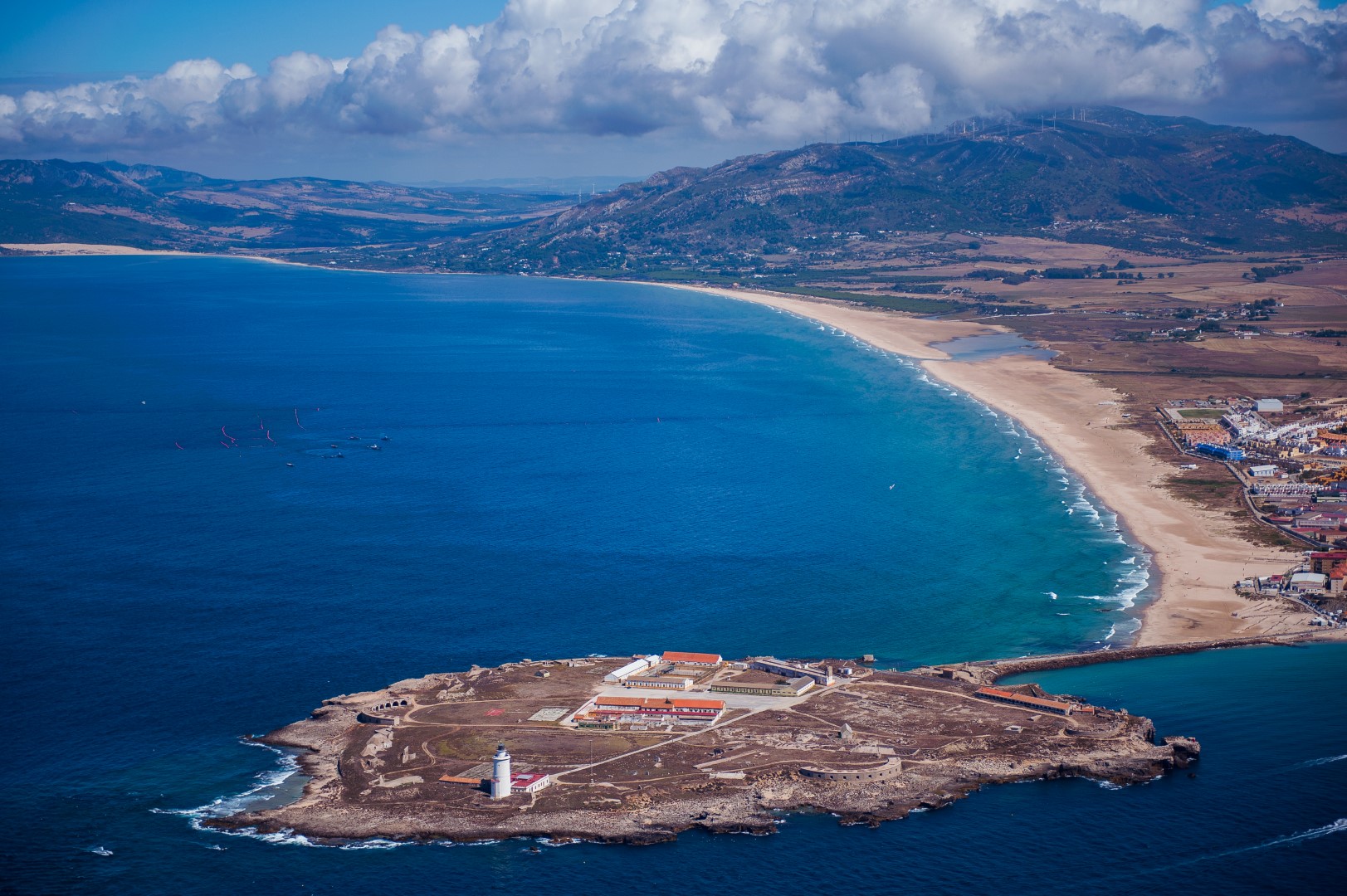
End of the journey: lighthouse of Punta Carbonera
Finally, we're off to San Roque. There we'll se the lighthouse of Punta Carbonera, the last one we'll see in our expedition. Park on the seafront of the residential district of La Alcaidesa and head down to the beach. You can walk to the lighthouse along the coast in attractive surroundings, and it's only about 500 metres.
The lighthouse was built at the end of the last century on an 17th century tower, and I'm sure you'll say the views are a good send-off for this journey. Well, not quite the end. We've still got time for dinner at a local restaurant, and to drink a toast to the next time we see each other. Cheers!!
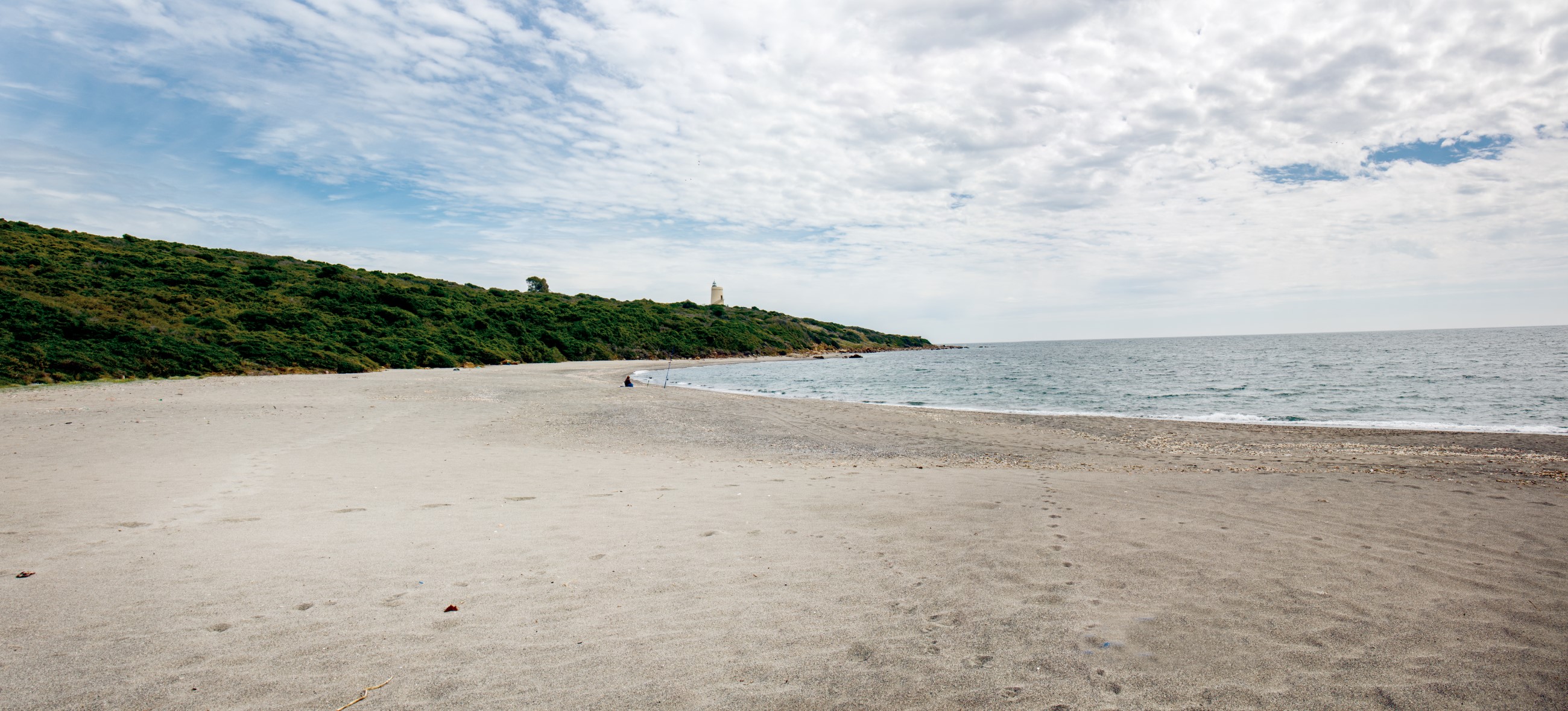
| Kilometres: 280 km. |
| Estimated driving time: 5 h y 40 min. |
| Recommended number of days: 4 |
| Atractivos: Playa y cultura. |
| See route: Google Maps |
